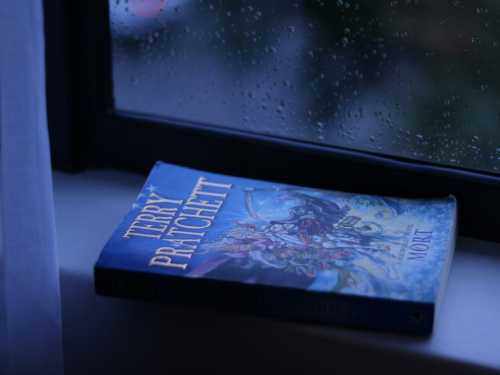
I hesitate to grab the word “reality” when probing at “Maniac” (Netflix). The series ventures through the altered consciousnesses of two participants in a psychiatric-drug trial, one of whom, Owen (Jonah Hill), has a history of schizophrenic delusions. Momentary hallucinations tilt the show into motion as a mental-hygiene thriller, and extended dream sequences intertwine with waking life to escalate its tensions.
But the baseline reality of the story—the launchpad for Owen’s journey to the bottom of his self—is New York City, reconstructed in a dysphoric future. The apocalypse it’s talking about is the one still going on. Using obsolete tech and tactile tokens of the late nineteen-hundreds to build its world, “Maniac,” which was created by Patrick Somerville and directed by Cary Joji Fukunaga, gives fantastical form to contemporary anxieties. It plays as if set-dressed in REM sleep—assembled in an instinctual rummage through a messy archive of cultural memory. Its design offers an uncanny imitation of life. (The production design is by Alex DiGerlando, a veteran of “True Detective,” and the art direction is by Audra Avery and Anu Schwartz.)
The lights of the New York of “Maniac” evoke a vastly disappointed “Blade Runner.” Electronic advertising desecrates the bridges, but boringly so, and outside the window of Owen’s Roosevelt Island apartment, a neon ad for Oral-B alternates with one for Jolly Rancher. It’s like the whole of the town is on line at Duane Reade. The society is post-industrial, but only primitively digital—a lot of dot-matrix printers and monochrome displays. There are no smartphones onscreen, but everywhere you look are shabby analogues of cybernated commerce. When short on money, citizens can use Ad Buddy: they service their debts by paying attention to commercial pitches presented by flesh-and-blood salespeople—a fun-house reflection, eerie but festive, of the attention economy.
Doxxing services are as convenient as copy shops, with an accompanying surliness of service; Annie (Emma Stone) visits one in the course of scamming her way into the drug trial, for the sake of feeding a chemical addiction. The company leading the experiment, Neberdine Pharmaceutical Biotech, has a logo inspired by Paul Rand’s logotype for I.B.M., its typography dotting the eyes with inviting soft surrealism. Note also the Helvetica lettering—“SANITATION”—on the robots that clank and whir to scoop poop from the sidewalks. We are in a world advanced enough that veritable Roombas for dog dirt work the streets, but they proceed with grimy familiarity. The balance of banality and wonder stimulates the sympathetic imagination.
Within N.P.B.’s offices, this eight-bit futurism takes on shades of both “Being John Malkovich,” where the offices of LesterCorp hosted a portal into other minds, and “Sorry to Bother You,” which, like “Maniac,” heightens the atmosphere by setting moments in elevators that reach from a Morlockian sub-basement to élite heights. Down in the testing center, Owen and Annie and their peers wear jumpsuits, and their voyages into the subconscious are piloted by researchers who speak as if manning a spaceship. The command center is like the bridge on the spaceship of NBC’s “Buck Rogers”—a nineteen-seventies idea of the twenty-fifth century.
Dominating the laboratory and overwhelming the visual scheme is a grand and rickety mainframe: an artificial intelligence that has developed emotions. This is an endearingly ridiculous machine, one whose buttons selectively light up to impersonate a woman’s face. With her free will and fierce convictions, she recalls the sentient machine in Godard’s “Alphaville,” especially when Dr. Fujita (Sonoya Mizuno), with her bangs and bob darkly gleaming like Anna Karina’s, appears at the helm of her consciousness. Fujita is joined by Dr. James K. Mantleray (Justin Theroux), an outcast called back to work amid a crisis, not unlike Ted Striker in “Airplane!”
With his Pynchonian name and alarming toupée, Dr. Mantleray is a farcical figure, and his absurdity encourages “Maniac” to maintain its eccentric orbit. He refers to the florid dreams excited in the drug trials as “reflections.” These play with the same dream logic of the “real” story, with Owen and Annie deposited in scenarios designed like genre fictions: a gentleman-thief caper, an elfin-eared fantasy epic. At once a self-help drama about personal faith and a wry metaphysical mind-bender, “Maniac” is about world-building—about giving an inner life a semblance of coherent narrative, about the stories we tell ourselves in order to get by.
Sourse: newyorker.com






